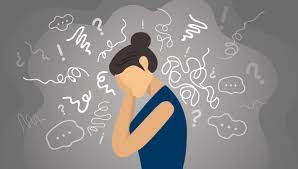There are those who say that psychotherapy is an art, something impalpable, almost magical, which occurs in the encounter between two human beings and which can hardly be defined.
We at the Ieled Center don’t think so.
Psychotherapy is a rigorous practice, founded on the scientific method that aims to change as measurable as possible. Undoubtedly you cannot measure anxiety in a child as you do with hemoglobin in the blood, but this does not mean that it cannot be done at all. Our effort is to bring the systematic nature of other health practices to the complexity of the human being.
Our approach, cognitive-behavioral psychotherapy
Cognitive Behavioral Psychotherapy is a form of psychological therapy that is based on the assumption that there is a close relationship between thoughts, emotions and behaviors and that emotional problems are affected by what we think and do in the present.
In fact, scientific research has shown that our emotional and behavioral reactions are determined by the way we interpret the various situations, therefore by the meaning we give to events.
The basic elements of cognitive behavioral psychotherapy
- It is founded on empirical grounds;
- It is relatively standardizable and therefore subject to research and studies;
- It is connected and integrated with other sciences: neuroscience, ethology, behavioral
- psychology, psychobiology;
- It is used all over the world with success and satisfaction by therapists and patients for
- practically all types of psychological and psychiatric disorders;
- Its theoretical foundations are relatively intuitive and immediately understandable;
- The duration of treatment is usually quite short.
What problems can be faced
Psychotherapy treats a wide range of emotional and behavioral problems, from difficulties in relationships with others, to performance anxiety, to actual psychological disorders.
In particular, psychotherapy is indicated for the following cases:
- Very intense anxiety in school situations (for example, checks, interrogations, …)
- Performance anxiety
- Panic attacks
- Anxiety about school (abdominal pain, desperate crying in the morning, …)
- Pathological shyness
- Depressive states
- Obsessive thoughts or compulsive behaviors
- Difficulty staying home alone without parents
- Behavioral disorders
- Attacks of anger
- Personality Disorders
- Adolescent hardships
How psychotherapy at the Ieled Center works
As part of the initial assessment, a qualified professional determines the need for psychotherapy. This decision is based on a number of factors such as: the child’s current problems, history, level of development and the ability to cooperate with treatment. Psychotherapy is often used in conjunction with other treatments (drug, behavior management, or school work).
The relationship that develops between the therapist and the patient is fundamental to achieving the set goals. It is only within a favorable and supportive relationship that one can work cooperatively.
The presence of a positive and meaningful relationship between the therapist and the patient allows the child / young person to express their thoughts and emotions and to use the therapy effectively.
Summary
Psychotherapy can help children and adolescents in various ways: for example, they can receive emotional support, help in resolving conflicts with other people or in understanding their own and others’ emotions. Before proceeding with the psychotherapeutic treatment, the professional will determine if there are the conditions for undertaking an intervention of this type.
